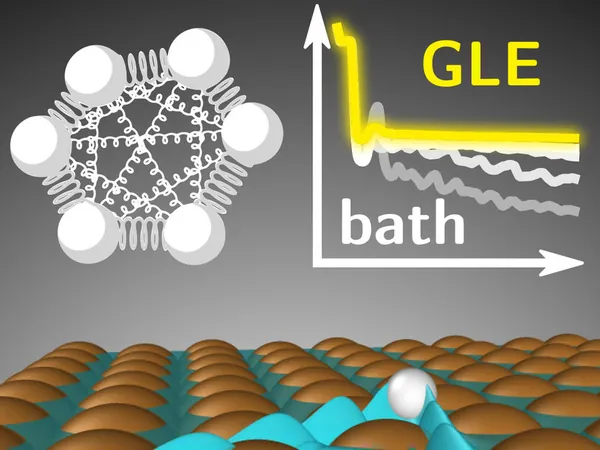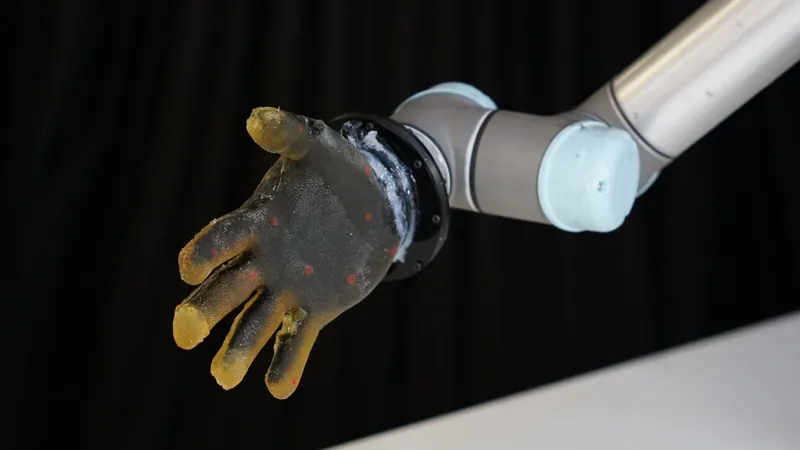
Unlocking the Secrets of Quantum Motion on Metals: A Breakthrough in Energy Management
2025-06-05
Author: Mei
In the quest for advanced technologies in chemical energy generation and storage, the movement and reactions of atoms and molecules on metallic surfaces play a pivotal role. Understanding this atomic dance is essential for tackling material degradation, enhancing chemical selectivity, and fine-tuning catalytic reactions.
At the heart of this atomic motion lies the dynamic relationship between electrons and atomic nuclei. Electrons are featherlight—almost 2,000 times lighter than the lightest nucleus—allowing them to swiftly adapt to the movements of nuclei. This mass difference often leads researchers to use a simplified model known as the "adiabatic" approach to describe atomic behavior.
But hold on! In certain scenarios, electron motion is so intertwined with the behavior of nuclei that a more complex model is necessary. This leads us to explore non-adiabatic effects—where electronic friction takes center stage. This phenomenon dramatically influences how atoms and molecules interact with metal surfaces, affecting their energy dissipation, sticking probabilities, and diffusion rates.
Think of it this way: if atomic nuclei were classical objects, the electrons would be creating a drag force as nuclei navigate through metallic landscapes. However, these nuclei are quantum entities that defy our everyday understanding. Notably, they possess zero-point energy, allowing them to escape energy wells more easily, and they can perform quantum tunneling, slipping past barriers without sufficient energy.
The implications are significant. These quantum effects can alter chemical reaction rates dramatically, making it vital to include them in simulations for accurate predictions.
In a groundbreaking study, researchers George Trenins and Mariana Rossi merged the concept of electronic friction with a novel method for simulating nuclear quantum effects through the path-integral formulation of quantum mechanics. Their approach accounts for the history of atomic movement, a unique feature known as "memory," coupled with zero-point energy effects. This combination explains the surprising concordance between previous classical simulations and actual experimental data.
Trenins enthusiastically asserts, "Our aim is to uncover the right answers for the right reasons. By capturing the intricate relationship between quantum nuclei and electronic friction, we shed light on energy exchange at conducting surfaces—essential for designing next-gen heterogeneous catalysts like single-atom alloys and two-dimensional materials."
Rossi echoes this excitement, stating, "This method can be extended to more complex systems in their entirety, opening up new avenues for exploration in areas previously deemed too challenging for simulation."


 Brasil (PT)
Brasil (PT)
 Canada (EN)
Canada (EN)
 Chile (ES)
Chile (ES)
 Česko (CS)
Česko (CS)
 대한민국 (KO)
대한민국 (KO)
 España (ES)
España (ES)
 France (FR)
France (FR)
 Hong Kong (EN)
Hong Kong (EN)
 Italia (IT)
Italia (IT)
 日本 (JA)
日本 (JA)
 Magyarország (HU)
Magyarország (HU)
 Norge (NO)
Norge (NO)
 Polska (PL)
Polska (PL)
 Schweiz (DE)
Schweiz (DE)
 Singapore (EN)
Singapore (EN)
 Sverige (SV)
Sverige (SV)
 Suomi (FI)
Suomi (FI)
 Türkiye (TR)
Türkiye (TR)
 الإمارات العربية المتحدة (AR)
الإمارات العربية المتحدة (AR)